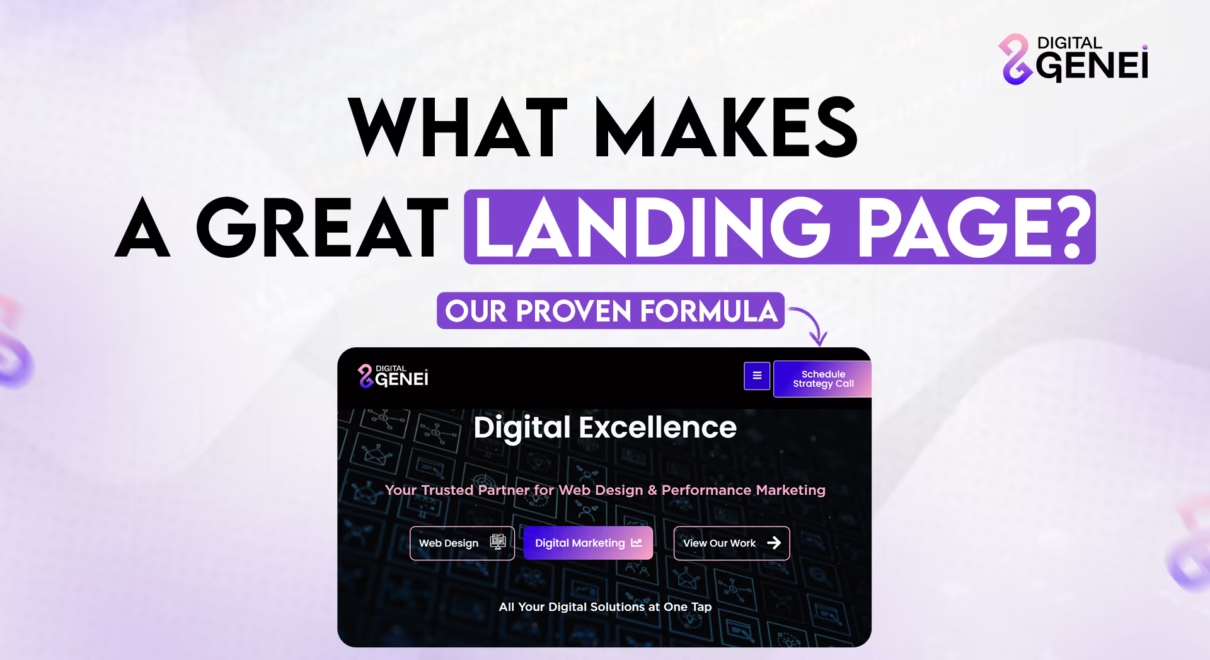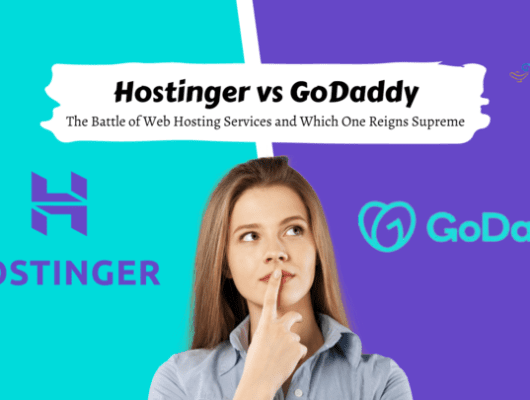In an era where every click counts, a high-converting landing page is essential for driving leads, boosting sales, and improving your website’s search engine ranking. However, many landing pages fail to deliver results because they lack clear messaging, effective SEO optimization, fast loading speeds, and trust-building elements.
Without these critical factors, even the best traffic won’t convert, and your page will struggle to rank on Google. Understanding how to create an SEO-friendly landing page that engages visitors and encourages action is key to maximizing your marketing ROI.
At Digital Genei, we’ve helped brands across industries turn underperforming pages into revenue-generating machines using proven strategies rooted in real-world data. In this article, we share our proven formula to build landing pages that not only rank well in search engines but also convert visitors into loyal customers in 2025 and beyond.
The Proven Formula for a High-Converting, SEO-Optimized Landing Page
1. Comprehensive Keyword Research and URL Optimization
Effective keyword research is the foundation of a successful landing page. Start by identifying high-intent, relevant keywords your target audience uses. Use tools like Google Keyword Planner, Ahrefs, or SEMrush to uncover valuable terms. Incorporate these keywords naturally throughout your content, including titles, headings, body text, image alt tags, meta descriptions, and URLs.
It is equally important to ensure your URL is short, descriptive, and includes the primary keyword, for example, yourdomain.com/great-landing-page-formula to improve search engine understanding and build user trust.
2. User-Centric, Value-Driven Content
Your content should clearly address your visitors’ needs with concise, benefit-focused language. Avoid jargon and emphasize how your product or service solves their problems. Using social proof such as testimonials, reviews, and case studies helps build credibility and trust.
Analyze competitor pages to understand search intent and ensure your content fully satisfies user queries by providing comprehensive, actionable information.
3. Single, Clear Conversion Goal with Optimized CTAs
Every landing page should focus on one primary conversion goal. Visitors need to immediately understand the page’s purpose. Use clear, action-oriented calls to action (CTAs) such as:
- “Get Started”
- “Download Now”
- “Request a Demo”
Place CTAs prominently above the fold. For longer pages, including multiple CTAs that all support the same goal helps maintain consistency and avoids confusing visitors.
4. On-Page SEO Best Practices: Title Tags, Meta Descriptions, and Headings
To optimize your page for search engines and users, consider the following:
- Front-load primary keywords in title tags.
- Enhance titles with modifiers such as “Proven,” “Best,” or “2025 Guide” to increase click-through rates.
- Write compelling meta descriptions under 160 characters including target keywords.
- Use header tags (H1, H2, H3) strategically with relevant keywords to structure content.
- Employ descriptive internal linking with keyword-rich anchor text to improve SEO and user navigation.
If you’re new to SEO or building your online presence, our Beginner’s Guide to SEO – What Every Small Business Owner Should Know can provide foundational knowledge before diving into advanced tactics.
5. Image and Video Optimization
Optimizing your visual content is essential for SEO and user experience. Key considerations include:
- Compress image file sizes to improve load speed.
- Use descriptive, keyword-rich file names and alt text for images to boost SEO and accessibility.
- Embed relevant videos with captions and transcripts to increase engagement and dwell time, positively impacting rankings.
6. Schema Markup Implementation
Add structured data to help search engines better understand your content and enhance search result listings. Common schema types include:
- Article schema for blog posts
- FAQ schema for frequently asked questions
Schema markup can generate rich snippets in search results, improving visibility and click-through rates.
7. Fast Loading Speed and Mobile-First Design
Page speed and mobile usability are critical. To optimize these, focus on:
- Implementing lazy loading for images and videos.
- Minifying CSS and JavaScript files.
- Leveraging browser caching.
- Designing mobile-first with:
- Touch-friendly buttons (minimum 48×48 pixels).
- Simplified navigation.
- Responsive layouts for seamless experience on all devices.
Aim for load times under 3 seconds to reduce bounce rates and improve SEO.
8. Accessibility and Inclusive Design
Ensure your landing page meets WCAG 2.2 standards to provide an inclusive experience. This involves:
- Providing sufficient color contrast.
- Supporting keyboard navigation.
- Adding alt text for images.
- Including captions for videos.
Accessibility not only broadens your audience but also positively influences SEO.
9. Trust Signals and Social Proof
Build visitor confidence by prominently displaying:
- Trust badges and security seals.
- Client logos and partner affiliations.
- Clear contact information.
- Authentic testimonials and customer reviews.
These elements reduce hesitation and increase conversion likelihood.
10. Clean, Focused Design and Visual Hierarchy
A well-organized design helps visitors focus on your message. Use:
- Ample white space to avoid clutter.
- Readable fonts.
- High-quality visuals that support your content.
- A clear visual hierarchy that guides visitors logically through the page, addressing questions and objections naturally.
Avoid cramming all content above the fold to maintain clarity.
11. Interactive and Engaging Elements
Enhance user engagement with subtle interactive features such as:
- Scroll-triggered animations.
- Micro-interactions (hover effects).
- Short autoplay videos.
Interactive tools like calculators or quizzes can also increase time on page and conversions without overwhelming users.
12. Data-Driven Optimization and Continuous Improvement
Use analytics and testing to refine your landing page continuously. Important practices include:
- Monitoring bounce rates, conversion rates, and traffic sources using tools like Google Analytics.
- Conducting A/B testing on headlines, CTAs, images, and layouts.
- Regularly updating content and SEO strategies to stay aligned with evolving algorithms and user expectations.
Conclusion
Creating a great landing page in 2025 requires a strategic blend of comprehensive keyword research, user-focused content, technical SEO, trust-building elements, and continuous optimization.
By implementing a clear conversion goal, mobile-first design, accessibility standards, schema markup, and interactive features, you can build landing pages that rank highly on Google and convert visitors effectively. Applying these best practices will maximize your marketing ROI and drive sustainable business growth.
Need Help Designing a High-Converting, SEO-Optimized Landing Page in 2025? At Digital Genei, we specialize in creating data-driven, mobile-first landing pages that not only rank high but also drive real conversions. Whether you’re a startup or an enterprise, our team uses the very strategies outlined above, refined and tailored for your business goals.






